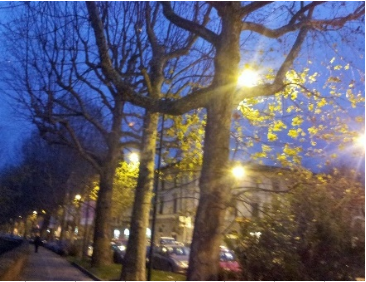 From https://www.radiopopolare.it/trasmissione/bam-bam-bam/ on July 17, 2018, kudos to Disma Pestalozza.
From https://www.radiopopolare.it/trasmissione/bam-bam-bam/ on July 17, 2018, kudos to Disma Pestalozza.
Listen to the interview (in Italian) (5 Mb, MP3)
 From https://www.radiopopolare.it/trasmissione/bam-bam-bam/ on July 17, 2018, kudos to Disma Pestalozza.
From https://www.radiopopolare.it/trasmissione/bam-bam-bam/ on July 17, 2018, kudos to Disma Pestalozza.
Listen to the interview (in Italian) (5 Mb, MP3)
 Issue 1, 2018, of the Langscape Magazine, which since several years has been covering cultural biodiversity topics worldwide, has an article on: “An Ancient Game Opens the Door to Innovation in the Farma Valley, Southern Tuscany, Italy”
Issue 1, 2018, of the Langscape Magazine, which since several years has been covering cultural biodiversity topics worldwide, has an article on: “An Ancient Game Opens the Door to Innovation in the Farma Valley, Southern Tuscany, Italy”
See the Table of Contents
By Luciano Massetti, from CNR IBIMET Florence, long-time buiometrista.
Published on Urban Forestry & Urban Greening, June 5, 2018.
https://www.sciencedirect.com/science/article/pii/S1618866717304181

Highlights
• Artificial light affects leaf fall phenology of Platanus x acerifolia.
• Trees exposed to higher level of light maintained green leaves longer in winter.
• Lighting and greening should be jointly considered in the design of public spaces.
• Presence-absence protocol for phenology can be useful in real context monitoring.
This poster was presented at the general conference of the European Citizen Science Association (ECSA), together with Luciano Massetti and Elena Maggi (presentation given by da Luciano Massetti):

Il poeta a braccio coglie l’occasione
E va verso sempre alla fortuna
Ma lo canta certo chi c’ha passione
Si canta al buio, col lume di luna
Ci vuol di avere tanta devozione
E trovarla la persona opportuna
E coraggio e forza sempre col pugno
Venite a Pomonte il diciassette di giugno
 The case of the Farma Valley Community Map is among 50 examples documented globally in a report about Identifying success factors in crowdsourced geographic information use in government. Pages 54-55 of the report, downloadable here.
The case of the Farma Valley Community Map is among 50 examples documented globally in a report about Identifying success factors in crowdsourced geographic information use in government. Pages 54-55 of the report, downloadable here.
After about a year from its first publication (see post), an updated version of the Farma Valley Community Map was published. The creation of the map started in 2014, with points of interest being gradually added to the official 1:10000 base maps, leading to document water springs, old gardens, hunting sites and other toponyms related to the life of the communities of this lesser known part of Southern Tuscany.

 With respect to the previous version, the map has bee enriched with place names provided in the past months by the Community of Scalvaia, and the area of interest has been expanded to the East, including Poggio alle Pigne, while new surveys are being conducted in this area. Last but not least, the readability of the map has been improved.
With respect to the previous version, the map has bee enriched with place names provided in the past months by the Community of Scalvaia, and the area of interest has been expanded to the East, including Poggio alle Pigne, while new surveys are being conducted in this area. Last but not least, the readability of the map has been improved.
The data collected are made available as open data and are published on the Tuscan Region Open Data portal.
Kudos to Pro Loco Piloni-Torniella for supporting the printing, and once more to the communities of Torniella, Piloni and Scalvaia for the data which they are sharing.
For more information: info@pibinko.org
 Read all about the event and the call for abstracts (closing Apr. 20) on the event’s website:
Read all about the event and the call for abstracts (closing Apr. 20) on the event’s website:
https://capraianightsky2018.com/
or write to
capraianightsky2018@ibimet.cnr.it
for inquiries.